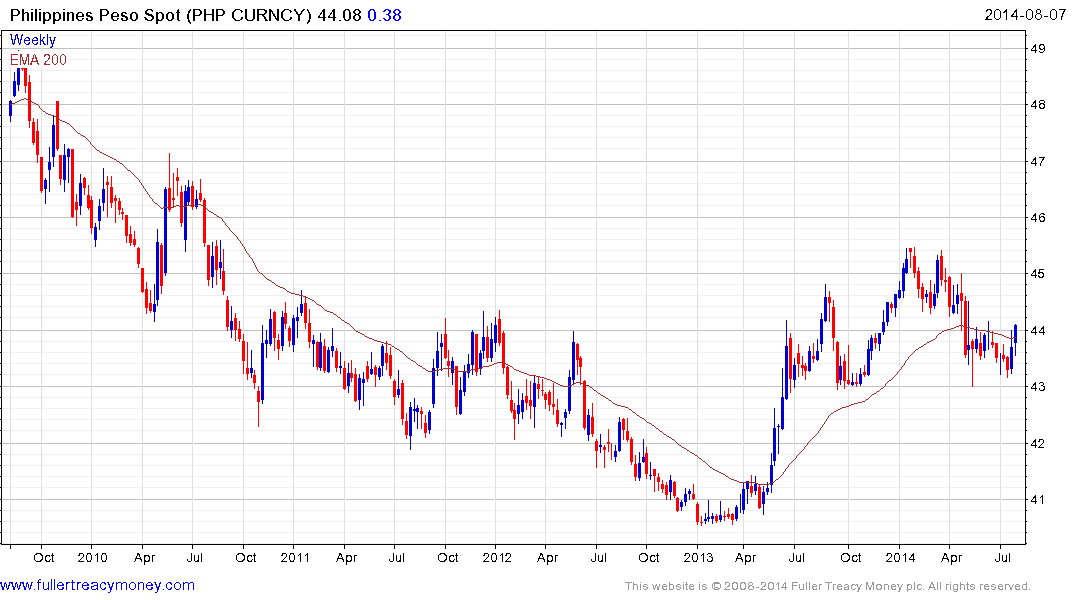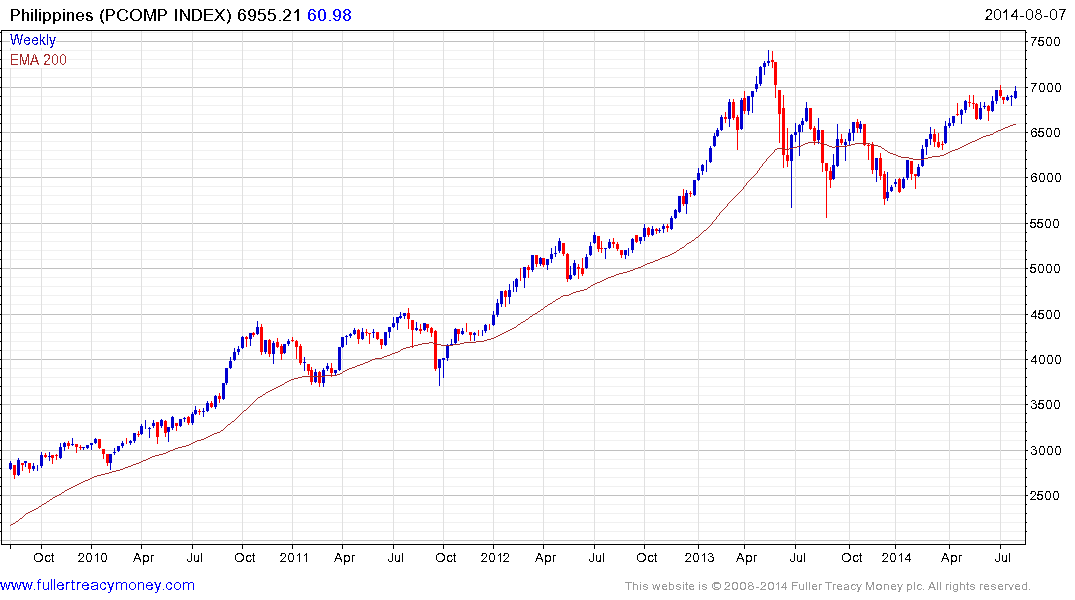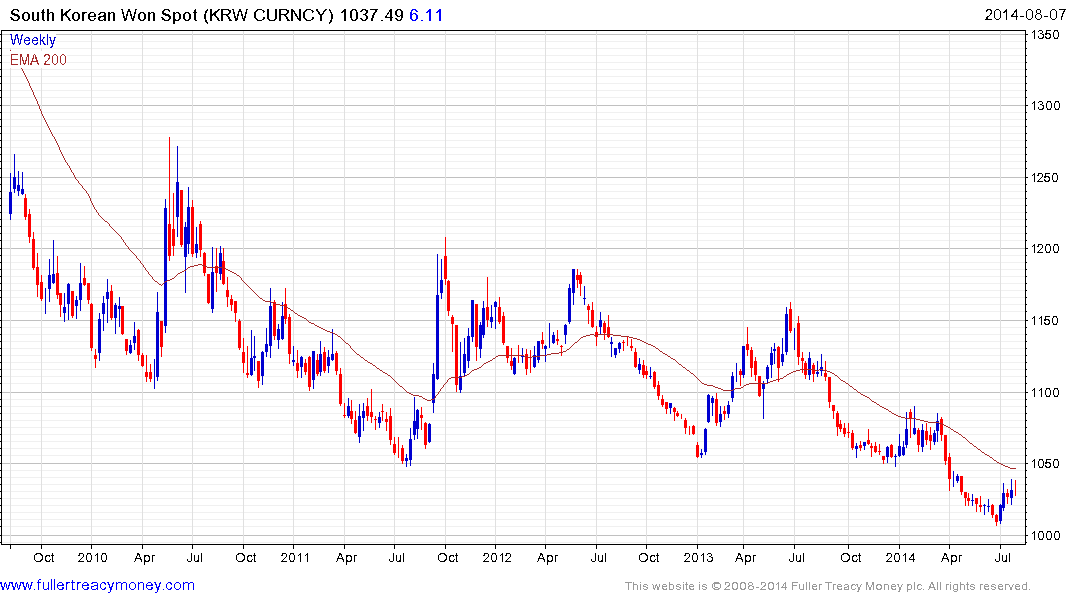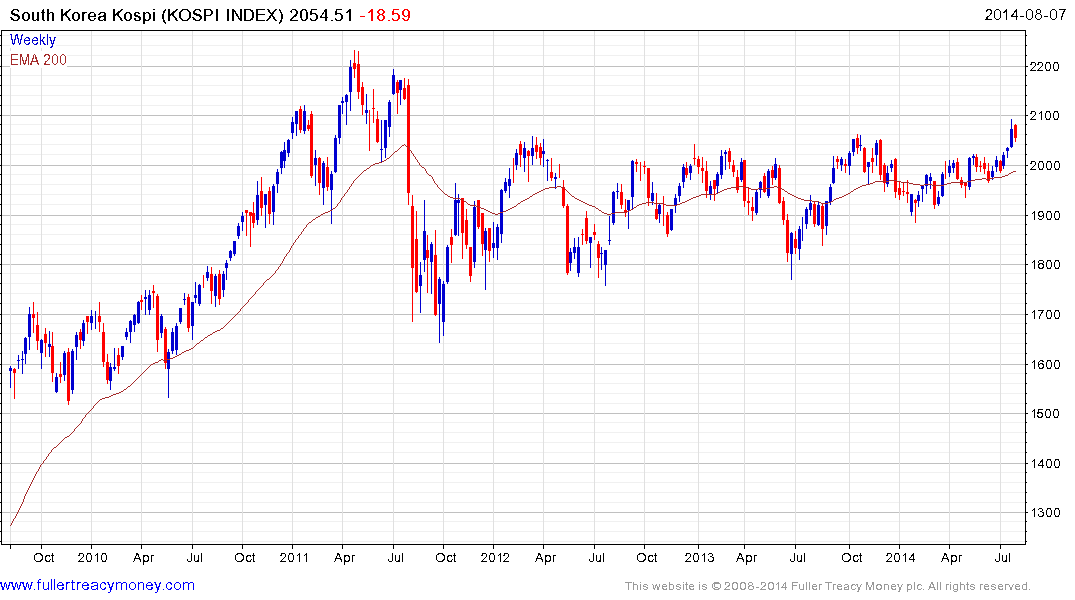Philippine Peso Falls Most in Nine Months as Growth Outlook Cut
This article by Clarissa Batino and Ditas Lopez for Bloomberg may be of interest to subscribers. Here is a section:
“The currency, already weak after the set of data from the U.S., dropped further after the World Bank’s lower growth forecasts,” said Luis Fernando, a foreign-exchange trader at United Coconut Planters Bank in Manila.
?The peso fell 0.8 percent to 44.07 per dollar at the close in Manila, its biggest drop since Nov. 11 and the weakest level since June 18, according Tullett Prebon Plc prices. One-month implied volatility, a measure of expected moves in the exchange rate used to price options, declined two basis points, or 0.02 percentage point, to 5.81 percent.
The Philippines is sticking to its 6.5 percent to 7.5 percent growth estimate this year even after expansion in the three months through March eased to 5.7 percent, the slowest in nine quarters, Economic Planning Secretary Arsenio Balisacan told reporters in Manila today.
Philippine inflation will probably average 5 percent this year, the World Bank also said today, higher than its earlier forecast of 4 percent. Consumer prices rose 4.9 percent in July from a year earlier, official data show.
The yield on the benchmark three-year sovereign bonds fell five basis points to 2.61 percent, the lowest since July 17, according to Philippine Dealing & Exchange Corp. prices.
The Philippines has come a long way since its series of defaults and devaluations in the 1990s and early 2000s but it is not immune from the growing pains that come with swift economic expansion. The Peso met with resistance in the region of PHP40 from 2008 and retested that level in 2013. Since then the Dollar has rallied to break the progression of lower rally highs and found support this week in the region of PHP43. A sustained move below that level would be required to question current scope for additional higher to lateral ranging by the Dollar.

The Philippine Index, in common with a number of ASEAN indices, has returned to retest its 2013 peak and a sustained move below the 200-day MA, currently near 6500, would be required to question medium-term scope for continued upside.

The South Korean Won has been conspicuously strong, particularly when other regional currencies have been weak. However this changed in July following a retest of the psychological KRW1000 against the US Dollar. The greenback has now unwound its overextension relative to the 200-day MA and a break in the progression of higher reaction lows would be required to question potential for continued upside.

The Kospi Index had been ranging mostly below 2050 for much of the last three years but broke out last week. Some consolidation is conceivable but a sustained move below the 200-day MA, currently near 1985, would be required to question medium-term scope for continued upside.

Back to top


